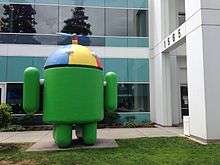Beanie (seamed cap)

In parts of Canada and the United States, a beanie refers to a head-hugging brimless hat with or without a visor. Seamed beanies are made from triangular sections of cloth joined by a button at the crown, and seamed together around the sides. They can also be made from leather or silk panels.
Styles
One popular style of the beanie during the early half of the twentieth century was a kind of skullcap made of four or six felt panels sewn together to form the cap. The panels were often composed of two or more different contrasting colors to give them a novel and distinctive look. This type of beanie was also very popular with some colleges and fraternities, as they would often use school colors in the different panels making up the hat.
Another style of beanie was the whoopee cap, a formed and pressed wool felted hat, with a flipped up brim that formed a band around the bottom of the cap. The band would often have a decorative repeating zig-zag or scalloped pattern cut around the edge. It was also quite common for schoolboys to adorn their beanies with buttons and pins.
Etymology
The cloth-covered button on the crown is about the size of a bean seed and may be the origin of the term "beanie". Some academics believe that the term is instead derived from a type of headgear worn in some medieval universities. The yellow hats (bejaunus, meaning "yellowbill", later beanus, a term used for both the hats and the new students) evolved into the college beanies of later years.[1]
According to the Oxford Dictionary, the etymology is uncertain, but probably derives from the slang term "bean", meaning "head". In New Zealand and Australia, the term "beanie" is normally applied to a knit cap known as a tuque in Canada and parts of the US, but also may apply to the kind of skull cap historically worn by surf lifesavers[2] and still worn during surf sports.[3] The non-knitted variety is normally called a "cap" in other countries.
In the United Kingdom, the term "Benny Hat" may also refer to a knitted style of headcovering. This name originally comes from the character "Benny", played by actor Paul Henry in the British Crossroads soap opera. The character appeared from the mid-1970s to the late-1980s and usually wore a knitted version of the hat.
History
A larger variant of the skullcap, the beanie was working apparel associated with blue collar laborers, including welders, mechanics, and other tradesmen who needed to keep their hair back, but for whom a brim would be an unnecessary obstruction. Beanies do sometimes have a very small brim, less than an inch deep, around the brow front. The baseball cap evolved from this kind of beanie, with the addition of a visor to block the sun.
By the mid-1940s, beanies fell out of general popularity as a hat, in favor of cotton visored caps like the baseball cap. However, in the 1950s and possibly beyond, they were worn by college freshmen and various fraternity initiates as a form of mild hazing. For example, Lehigh University required freshmen to wear beanies, or "dinks", and other colleges including Franklin & Marshall, Gettysburg, Rutgers, Westminster College and others may have had similar practices.[4] Benedictine College, in Atchison, Kansas, still carries this tradition for the first week of a freshman's classes,[5] and is said to be the only college in the US to maintain this tradition.[6] Wilson College continues this tradition today as a part of its Odd/Even class year "rivalry". [7]
Propeller beanie
In the late 1940s, science fiction fanzine artist Ray Nelson (himself still in high school) adopted the use of the propeller beanie as emblematic shorthand for science fiction fandom. This was in self-mockery of the popular image of fans as childish and concerned with ephemera (such as science fiction). References to the distinctive headwear are ironically now used to identify old-fashioned fans, as opposed to more modern fans of media SF.
The propeller beanie increased in popular use through comics and eventually made its way onto the character of Beany Boy of Beany and Cecil. Today, computer savvy and other technically proficient people are sometimes pejoratively referred to as propellerheads thanks to the one-time popularity of the propeller beanie.[8]
In the 21st century, propeller beanies are rarely seen on the street, and are primarily worn for satirical or comedic purposes.
In 1996, student hackers placed a giant propeller beanie on the Great Dome at the Massachusetts Institute of Technology. The scaled-up propeller rotated as the wind drove it like a windmill.
See also
References
- ↑ Kimbrough, Walter M. Black Greek 101: the culture, customs, and challenges of Black fraternities. Fairleigh Dickinson University Press, 2003, p. 38.
- ↑ Anonymous. Our history, Surf Life Saving Australia, 15 July 2010.
- ↑ Surf Sports at Surf Life Saving NZ
- ↑ Haydock, Michael D. Excerpt from "The GI Bill"
- ↑ Excerpt from Benedictine College Student Handbook, 2010-2011, p. 84.
- ↑ Minnis, Stephen D. "Beanie Banquet" Speech, Benedictine College
- ↑ 'About Wilson College - History and Traditions' Archived April 30, 2013, at the Wayback Machine.
- ↑ "propellerhead" at Merriam-Webster
External links
| Wikimedia Commons has media related to Propeller beanies. |